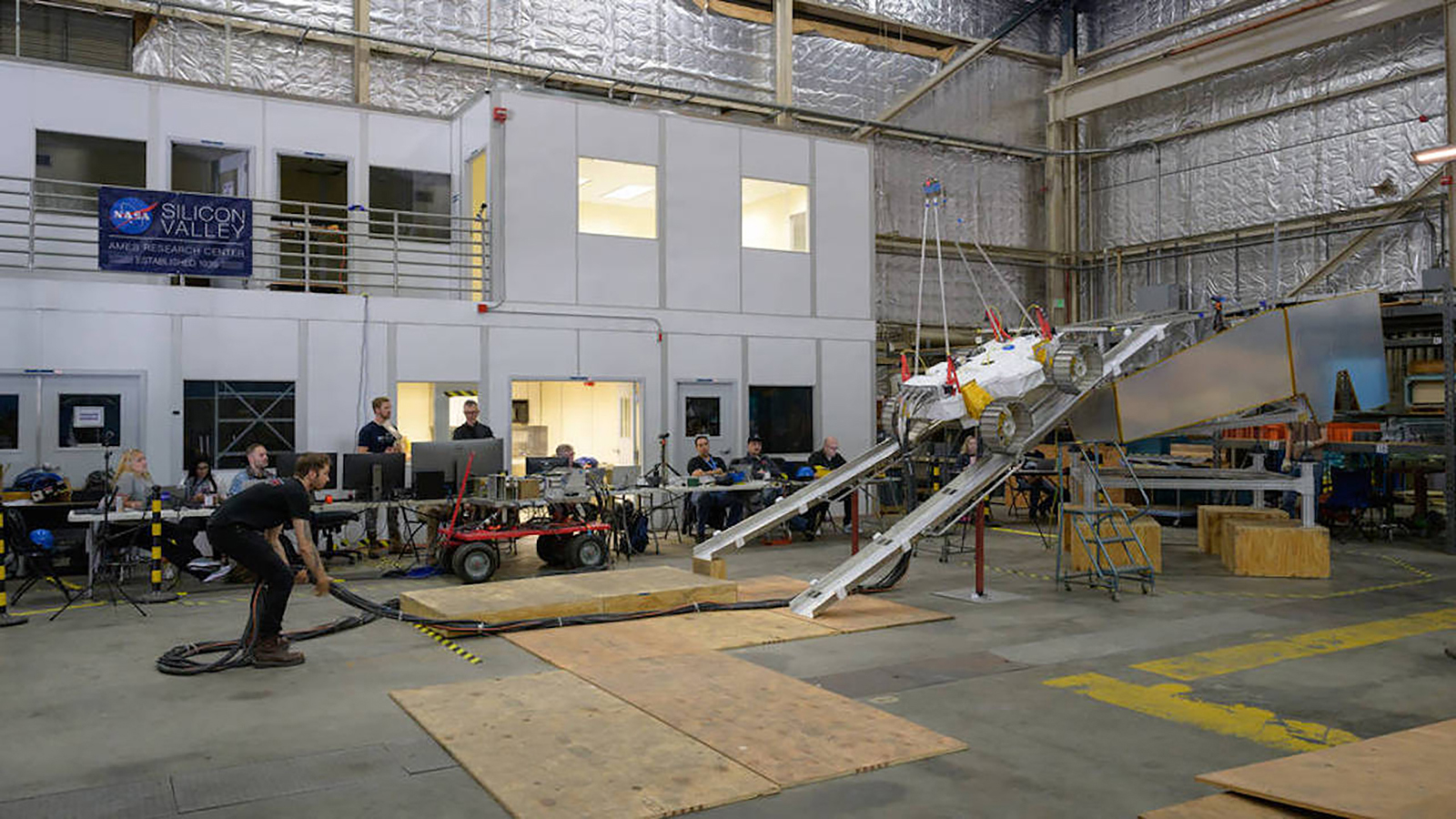Stay Up to Date
Submit your email address to receive the latest industry and Aerospace America news.
The Space Automation and Robotics Technical Committee works to advance the development of automation and robotics technologies and their applications to space programs.
In January, NASA and industry collaborators published a paper on the Space Robotics Operating System. This open-source framework for writing space robotic flight software aims to create a quicker path to flight and lower the cost of new missions.
In February, NASA selected the Aerospace Corp. to operate the Consortium for Space Mobility and ISAM Capabilities to bring together industry, academia and government to collaborate on in-space servicing, assembly and manufacturing development.
In March, progress was made on multiple lunar rovers. NASA began assembly of its Volatiles Investigating Polar Exploration Rover, or VIPER, at Johnson Space Center in Texas, integrating instruments delivered from NASA’s Kennedy Space Center in Florida and NASA’s Ames Research Center in California. NASA also released a draft strategy for continued exploration of Mars, outlining plans for robotic missions following the Mars Sample Return mission. Canada announced that its federal budget included $1.2 billion to create a lunar utility vehicle. The Australian Space Agency awarded grants for Trailblazer Stage 1, a program to design a lunar rover that can collect regolith and deliver it to a NASA in situ resource utilization facility. Japanese company GITAI used two rovers each equipped with dual robotic arms to demonstrate lunar base construction in a Californian desert environment that simulated the lunar surface.
Also in March, NASA’s Jet Propulsion Laboratory and Motiv Space Systems of California published a journal article about their Cold Operable Lunar Deployable Arm, describing the development and testing for component and system technologies that would allow this robotic arm to operate in extremely cold environments, such as lunar nights. In April, Motiv announced its partnership with PickNik Robotics of Colorado to upgrade the xLink robotic arm to use MoveIt Studio software, aiming to create a more capable robotic manipulator for ISAM.
In June, NASA’s Cooperative Autonomous Distributed Robotic Explorers project completed its first autonomous driving test with a model rover in JPL’s Mars Yard in California. A trio of rovers are being built for a Commercial Lunar Payload Services lunar mission that aims to show how multiple autonomous robots can simultaneously take measurements across different locations. Additionally, the JPL-funded Multi-Modal Mobility Morphobot project published testing results. The M4 rover, led by professors at Caltech and Northeastern University, was designed with four articulatable wheels with embedded propellers, prototyping the next generation of rovers that could autonomously adapt to their terrain and circumvent obstacles by morphing modes of traversing, including driving, walking and flying.
In June, Northrop Grumman’s SpaceLogistics sold its third Mission Extension Pod to Intelsat. This “jet pack” is attached to legacy satellites to provide propulsion. The pods will be installed by SpaceLogistics’ Mission Robotic Vehicle, which is equipped with a pair of DARPA’s Robotic Servicing of Geosynchronous Satellites robotic arms built by the U.S. Naval Research Laboratory in Washington. Researchers completed all component-level testing in November 2022.
In July, NASA announced a Tipping Point award to Astrobotic Technology. The Pennsylvania company is to land its Griffin lander to the moon to demonstrate robotic deployment of a power cable across the lunar surface with its CubeRover. NASA selected Protoinnovations of Pennsylvania to mature mobility control software for lunar robots and rovers. Redwire of Florida was selected to build lunar infrastructure, such as landing pads, using microwave emitters to heat and solidify regolith.
In August, the Indian Space Research Organization’s Vikram lander touched down near the lunar south pole. The lander deployed the Pragyan rover, which in September completed its first motion and data collection tasks.
Stay Up to Date
Submit your email address to receive the latest industry and Aerospace America news.




